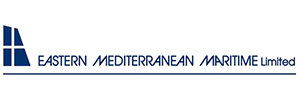The Digital Container Shipping Association (DCSA) has analyzed the differences between Bills of Lading and Sea Waybills.
When it comes to the container shipping industry, documentation is crucial to ensure the smooth transportation of goods. Two shipping documents often encountered are the Bill of Lading (B/L) and the Sea Waybill.
While their purposes are similar, the scenarios for their use and their legal implications differ significantly, according to DCSA.
What is a Bill of Lading?
A Bill of Lading (B/L) is a trade document issued by the carrier to the shipper, with three main purposes:
- Contract of Carriage: evidences an underlying contract and outlines the terms for transporting goods.
- Receipt of Goods: acknowledges that the goods have been received for carriage by the carrier.
- Document of Title: provides proof of possessory rights and obligations.
A B/L can be classed as negotiable or non-negotiable, making it versatile for various shipping scenarios. A negotiable B/L allows title to be transferred via endorsement and delivery, making it an essential tool for transactions where goods may change hands during transit or financed.
On the other hand, non-negotiable B/Ls (also referred to as straight Bills of Lading) do not transfer title and the named consignee cannot be changed.
What is a Sea Waybill?
A Sea Waybill is a transport document that can be used as an alternative to the B/L. Similar to a B/L the Sea Waybill evidences the contract of carriage and receipt of goods.
However, unlike a B/L, the Sea Waybill:
- Is not a document of title.
- Is non-negotiable and cannot be used to transfer title.
- Eliminates the need for physical documents for cargo release.
As it does not require the surrender of an original document for the release of goods at destination, the Sea Waybill can facilitate faster transactions.
What are the key differences between a Bill of Lading and a Sea Waybill?
The key differences between a B/L and a Sea Waybill are the transferability, the security and the negotiability they each offer. A B/L is a more formal and structured business transaction, best suited to newer business relationships and relations where documentary collection or a letter of credit are in place.
A Sea Waybill, however, is a document that is more feasible for repetitive transactions. This does make it less secure, and a procedure better suited to parties with long-standing, trusting business relations.
When to Use a Bill of Lading
A B/L is preferred in scenarios where:
- Titles to the goods is likely to change during transit.
- There is a lack of established trust between the shipper and consignee.
- The shipment involves complex financial arrangements, such as letters of credit.
- Legal disputes over ownership or condition of goods may arise.
- Additionally, the B/L is commonly required for customs clearance and is often used in insurance claims if cargo is lost or damaged.
When to Use a Sea Waybill
A Sea Waybill is appropriate when:
- The shipper and consignee have an established, trusting relationship.
- There is no intention to transfer title to any third-party.
- Faster cargo release is a priority, such as in just-in-time delivery models.
- Electronic documentation is preferred to reduce administrative burdens.
According to DCSA, choosing the Right Shipping Document Selecting between a Bill of Lading and a Sea Waybill depends on the specific requirements of the shipment. If you need flexibility, security, and legal documentation for title transfer, a Bill of Lading is the better choice.
However, for efficiency, simplicity, and trusted partnerships, a Sea Waybill is often more suitable. Both documents play critical roles in global trade and logistics, and understanding their differences ensures a smoother shipping process.

































































